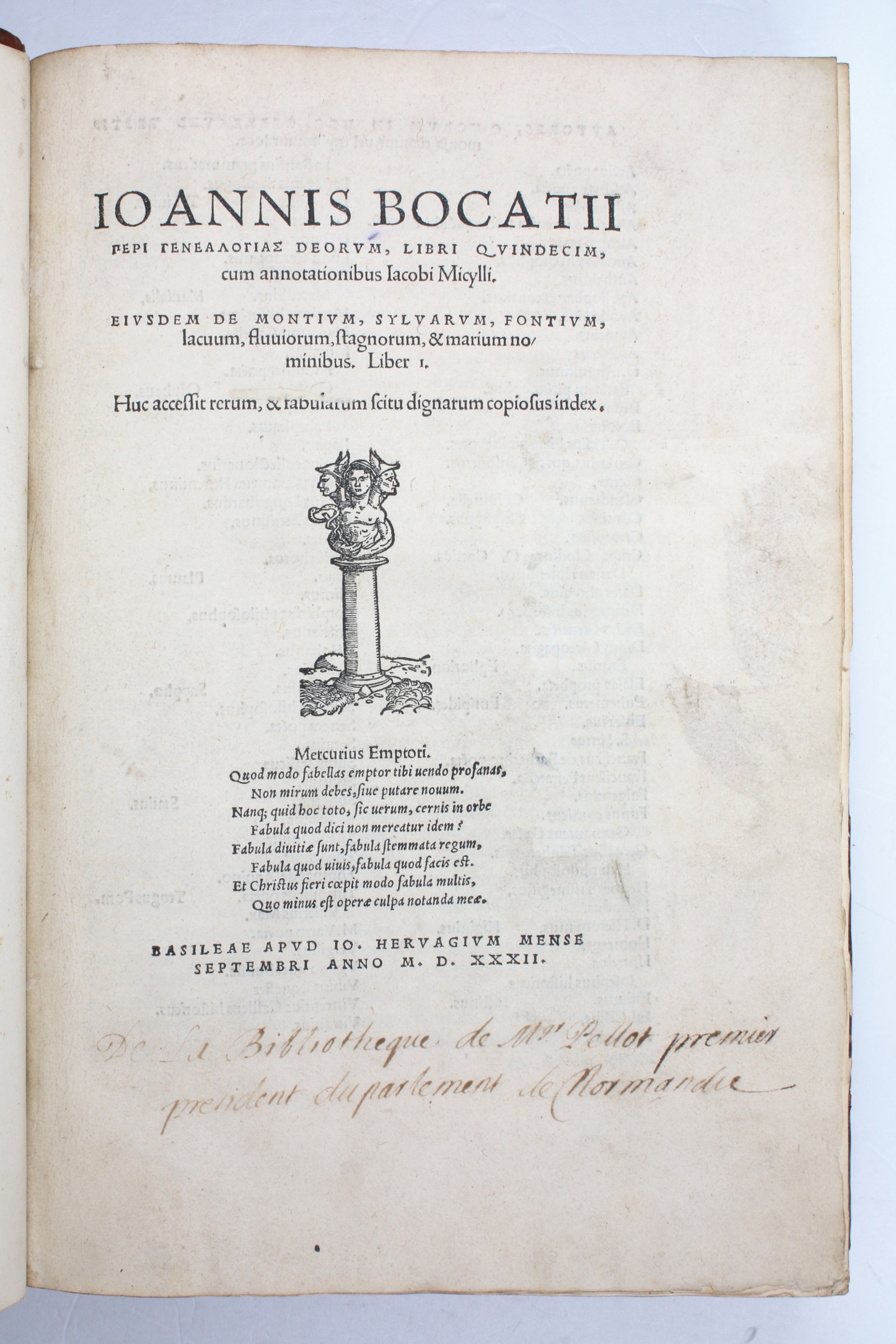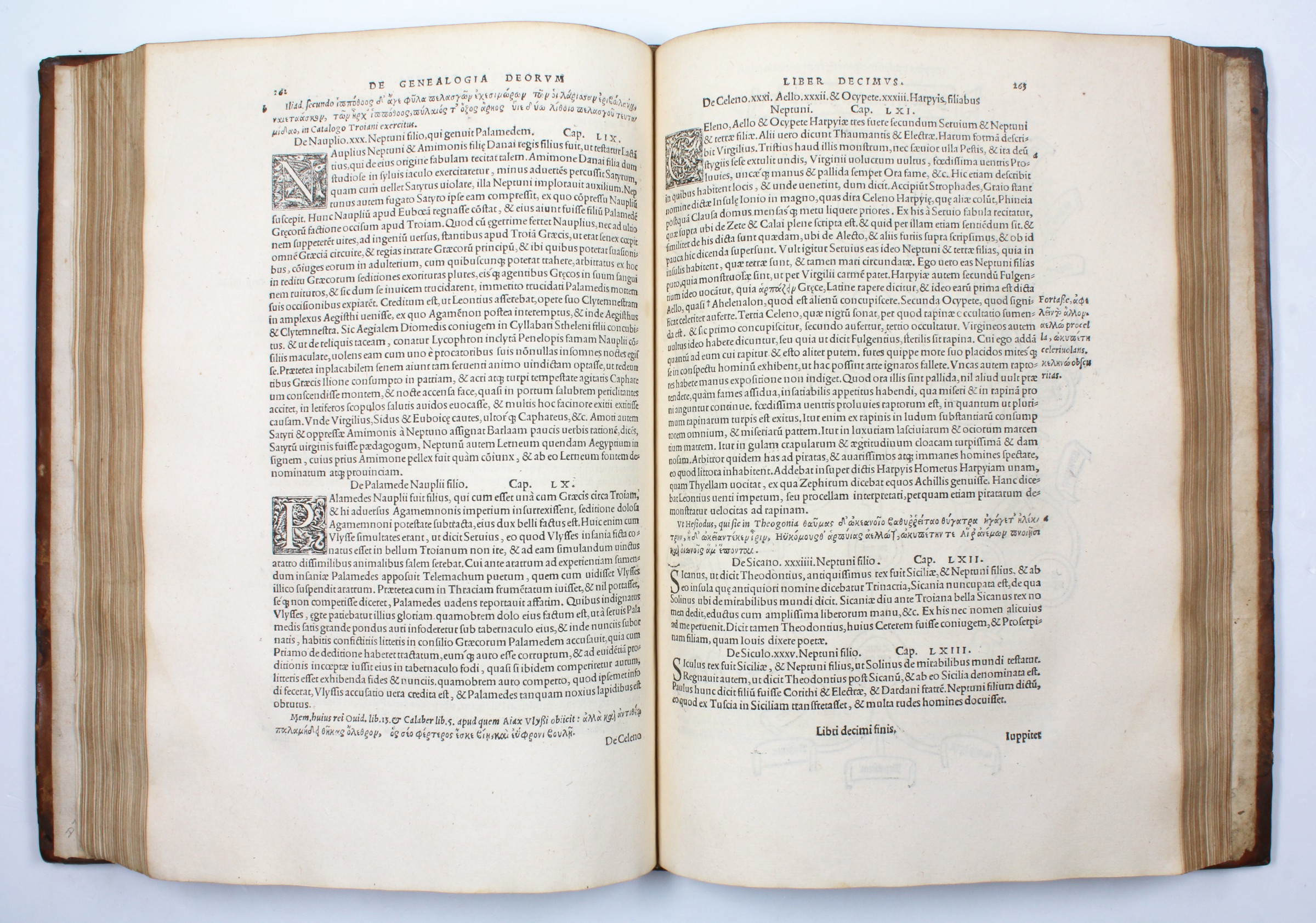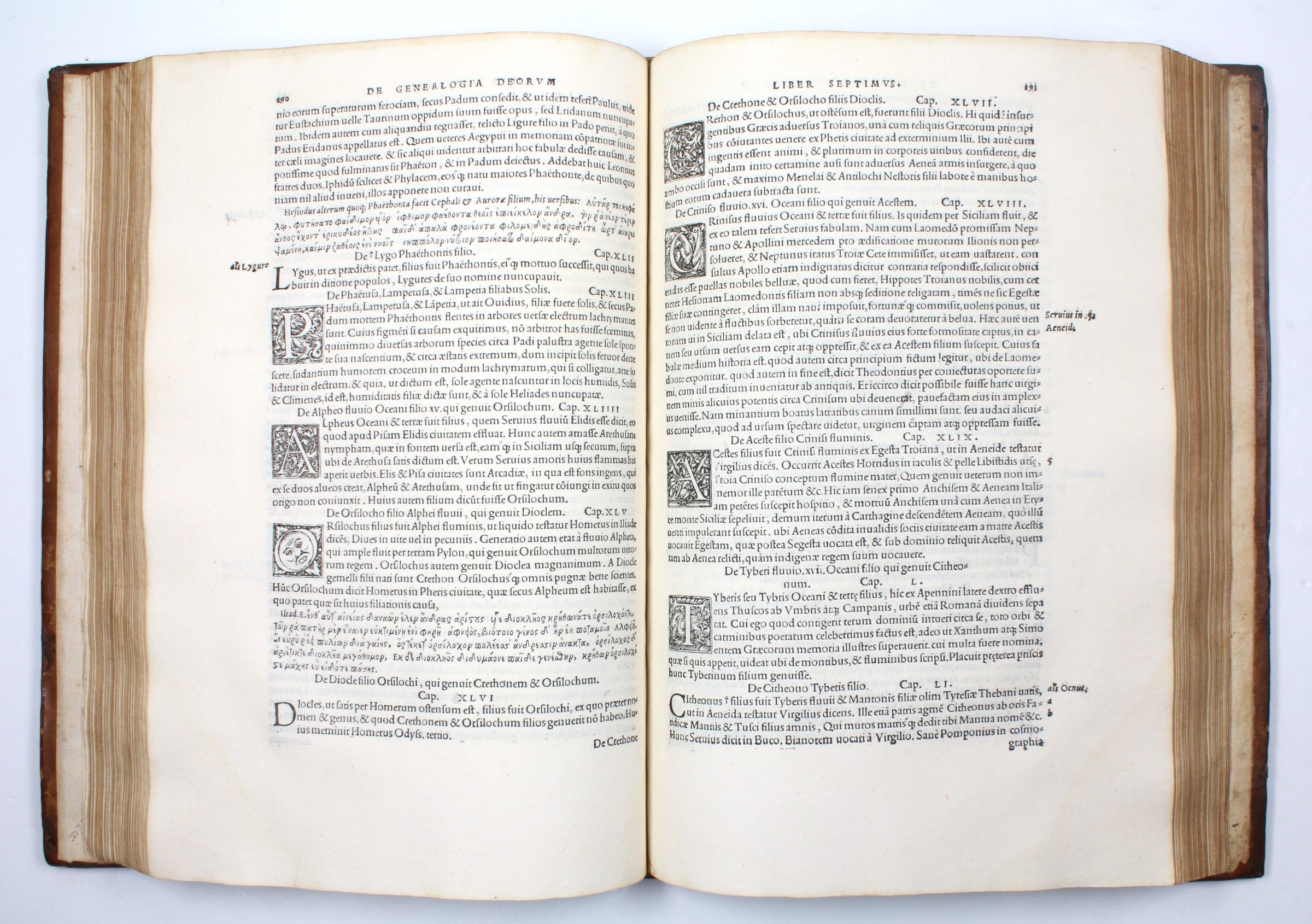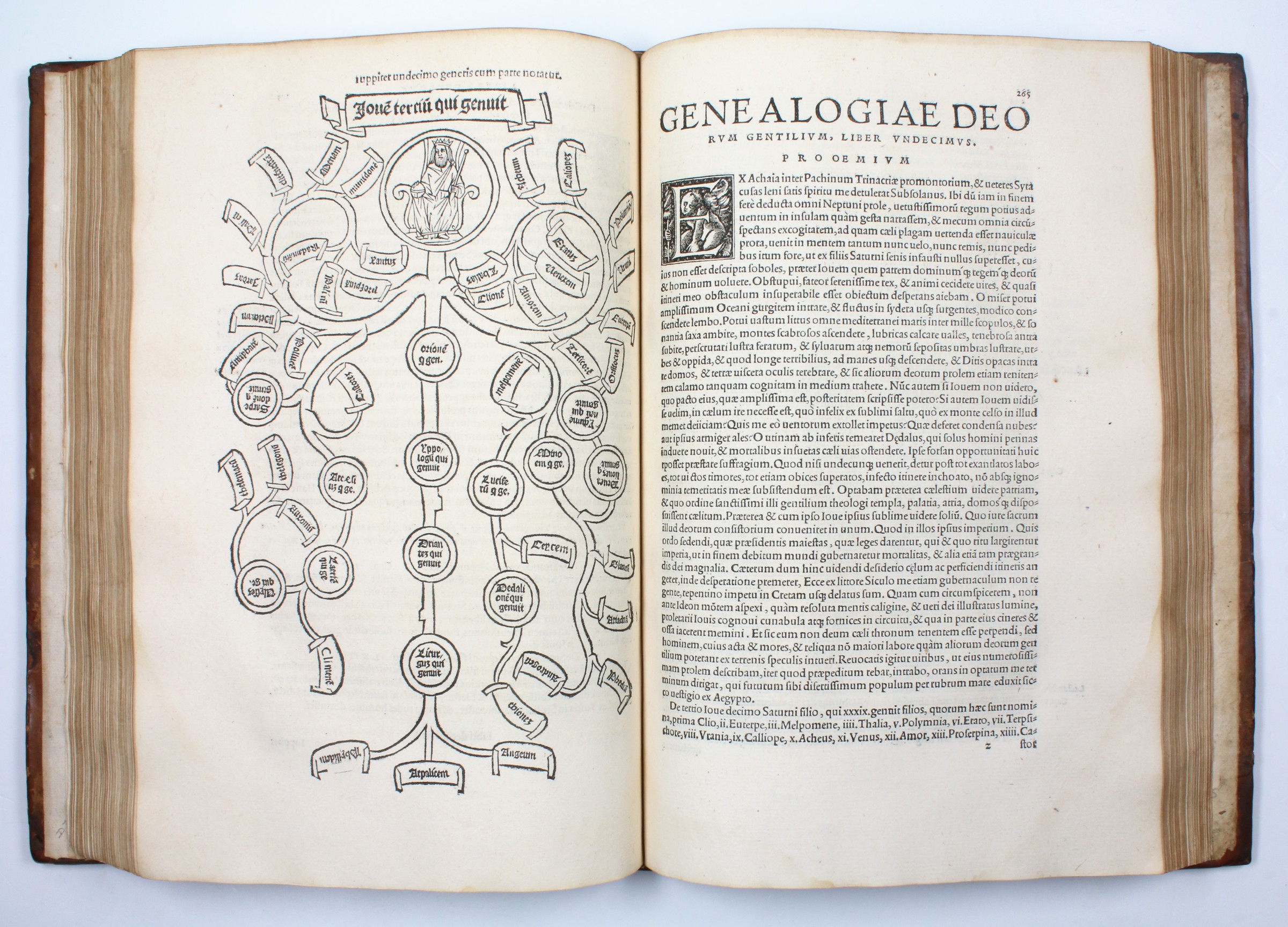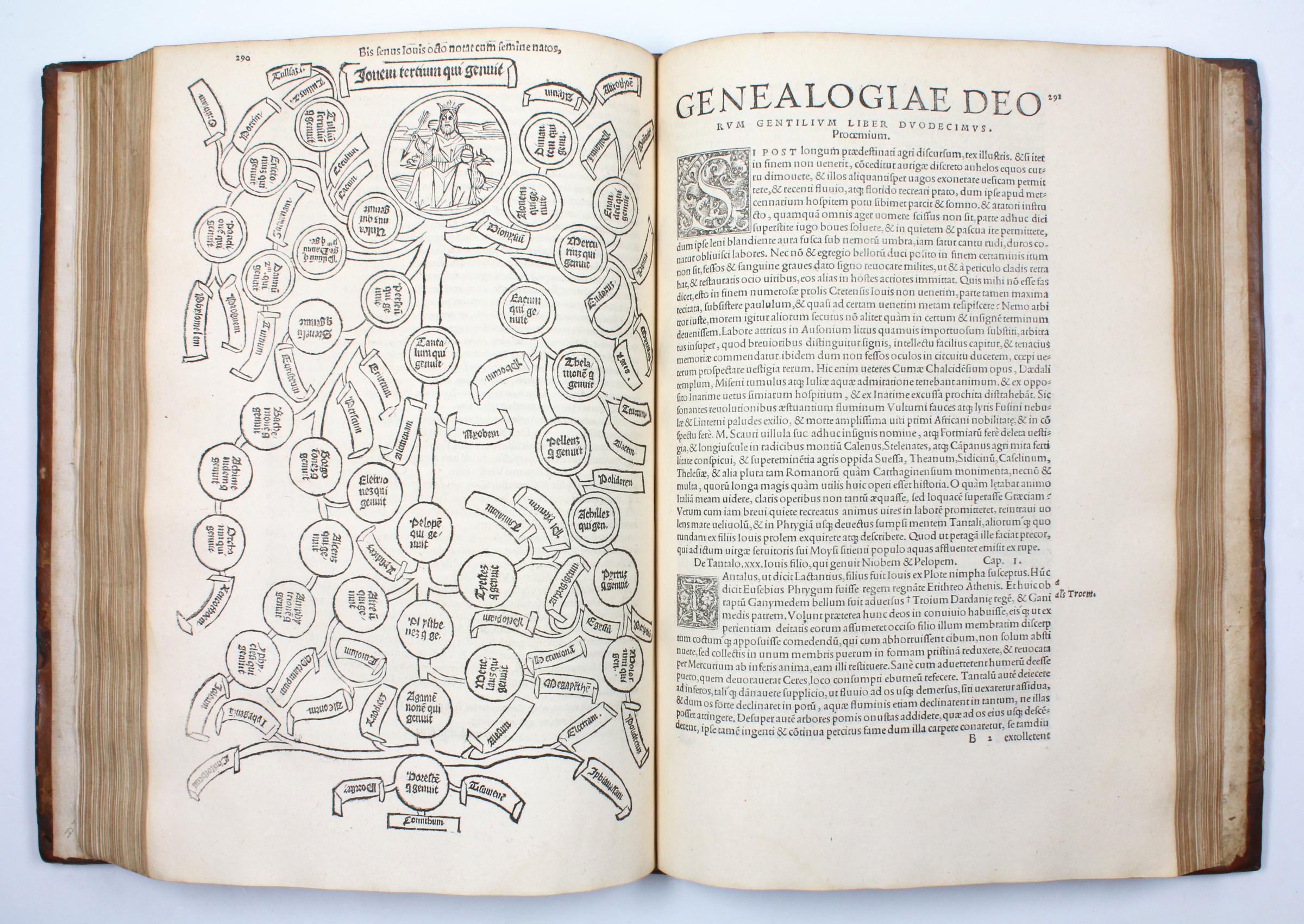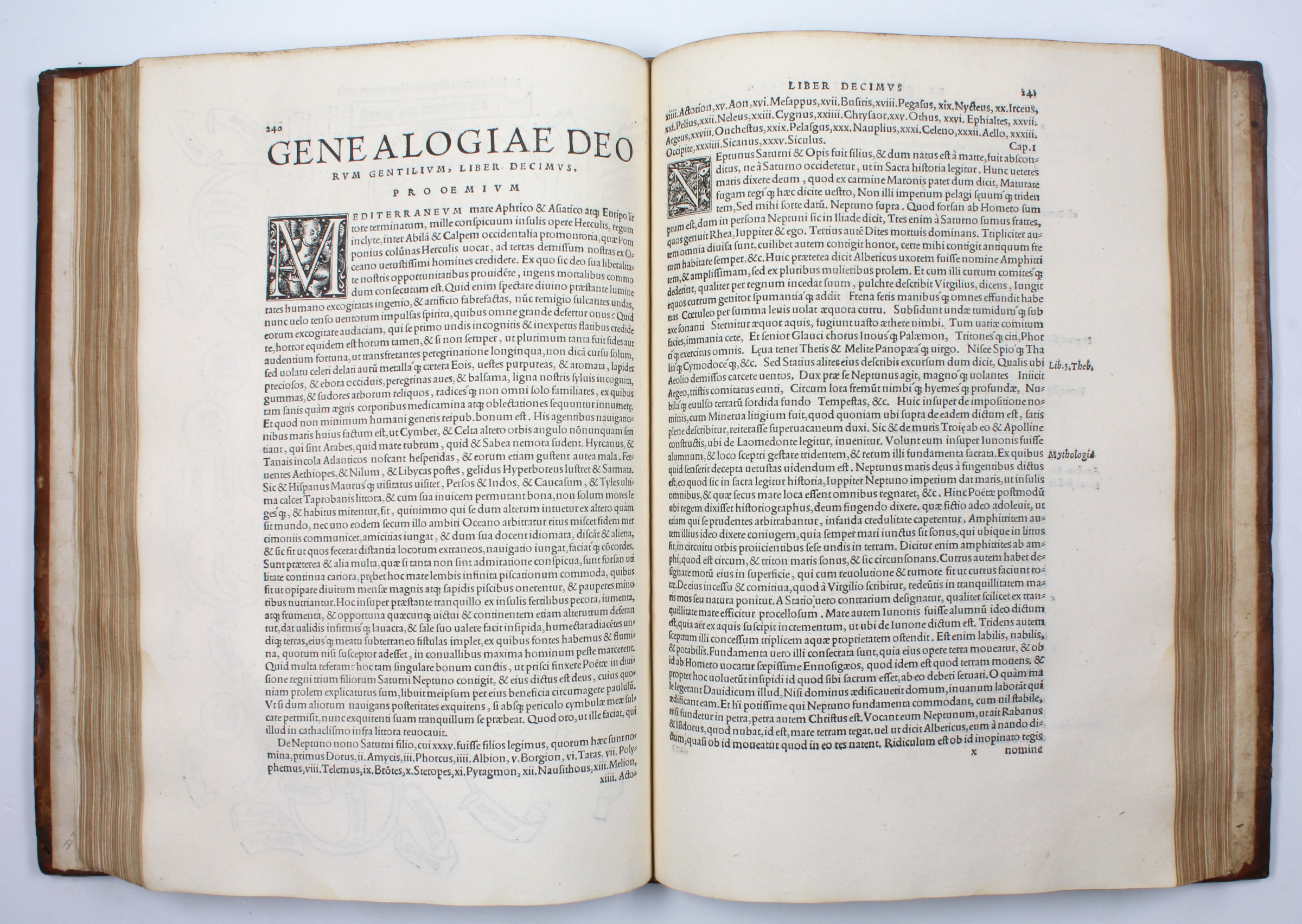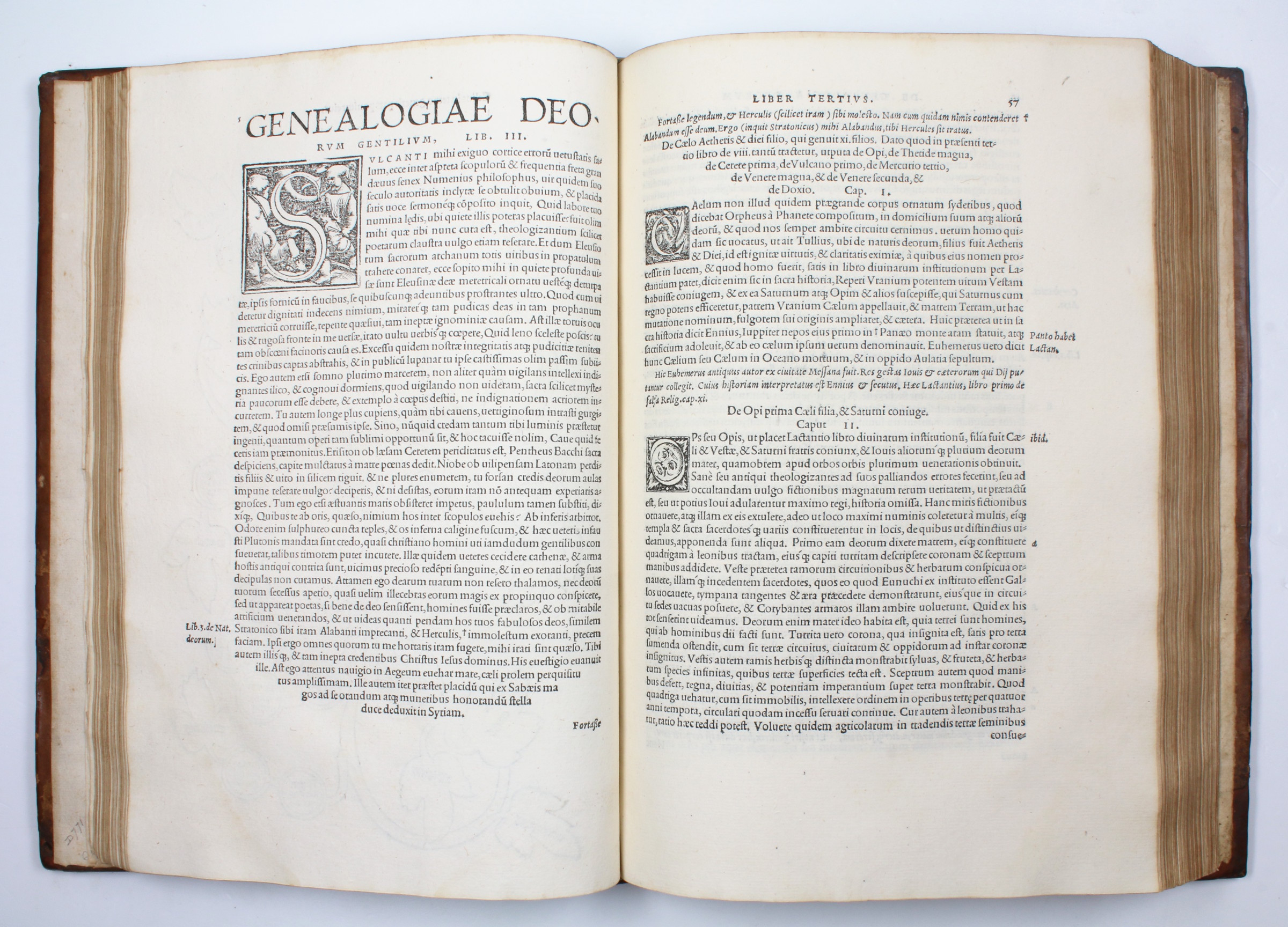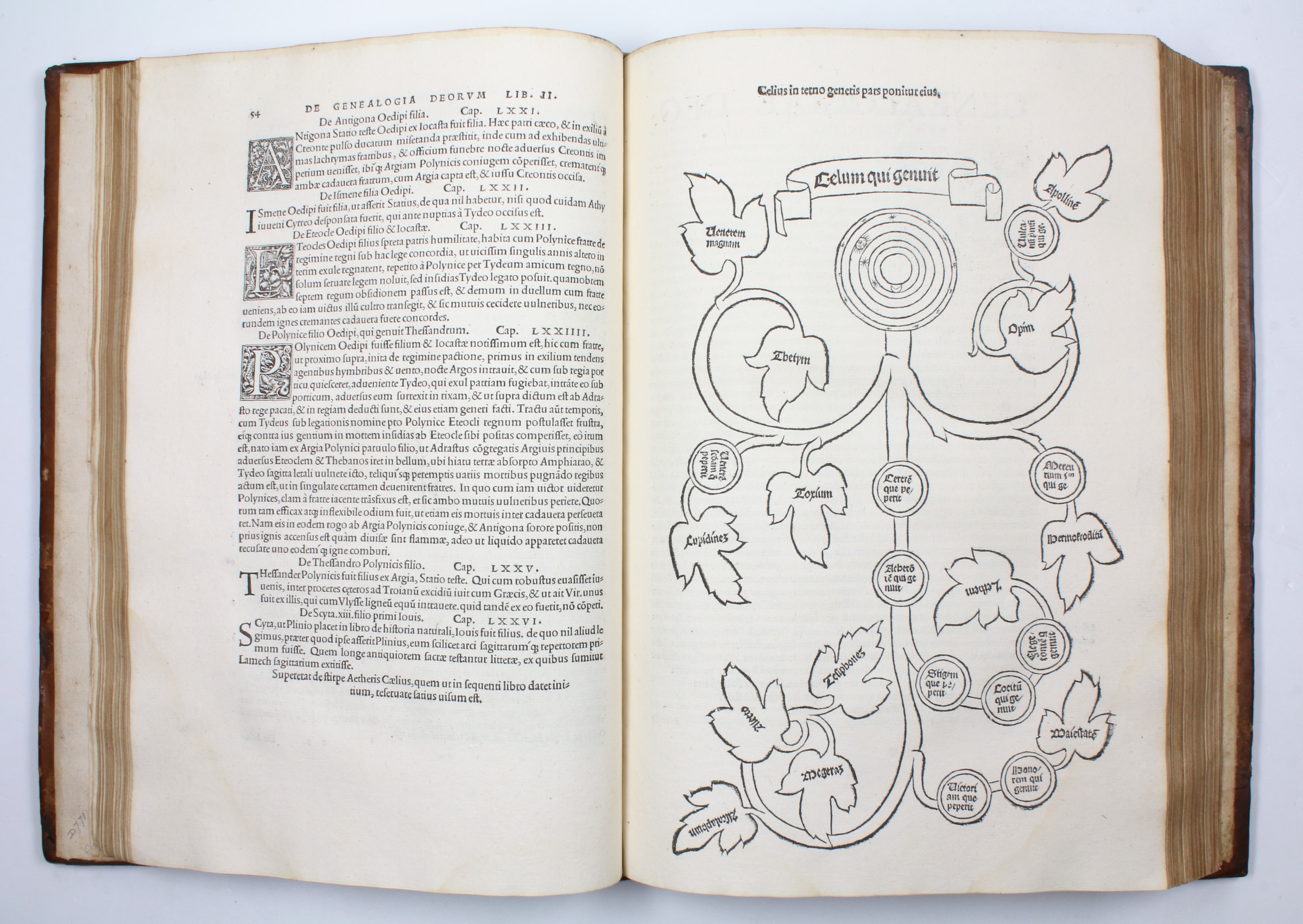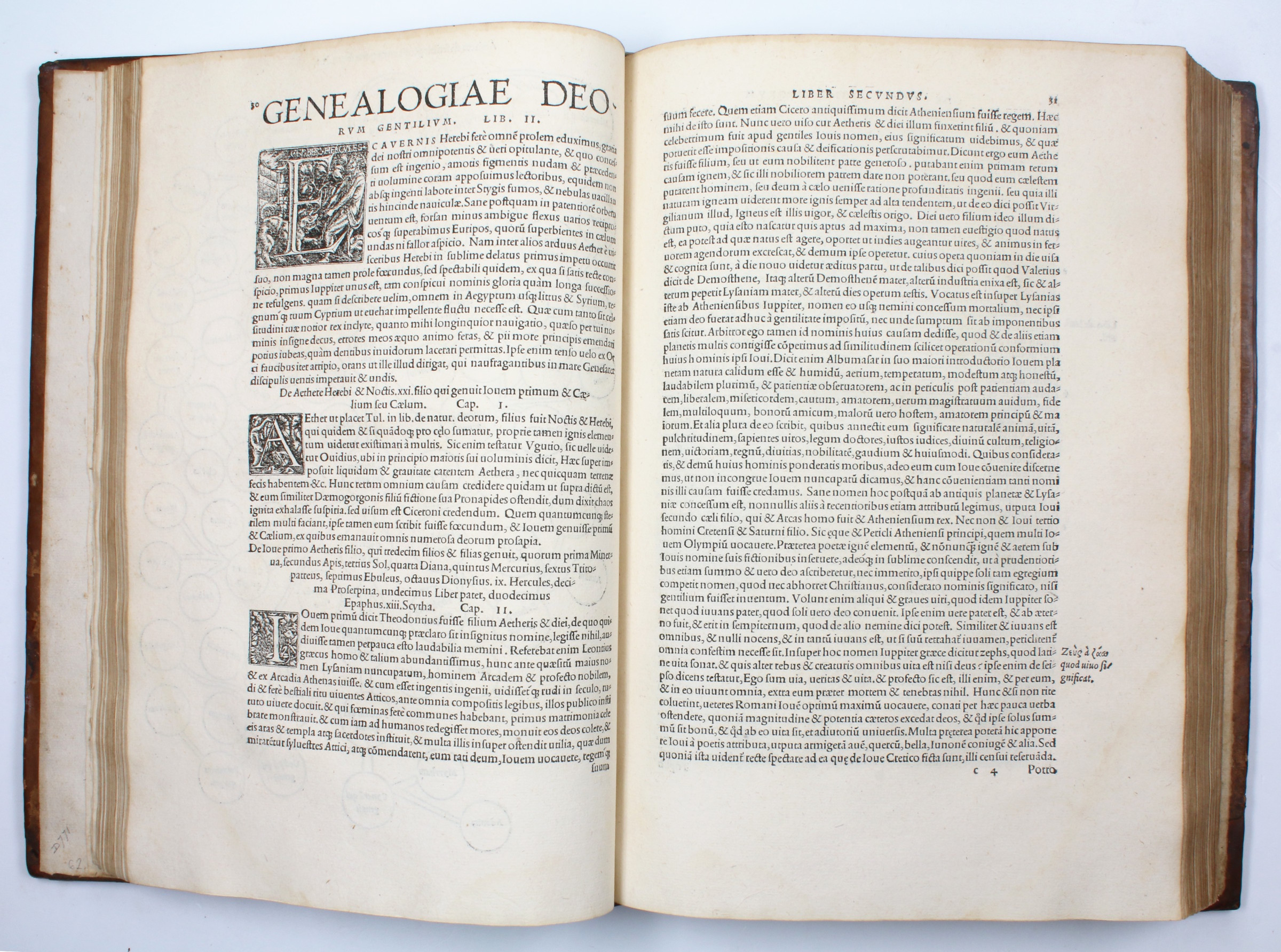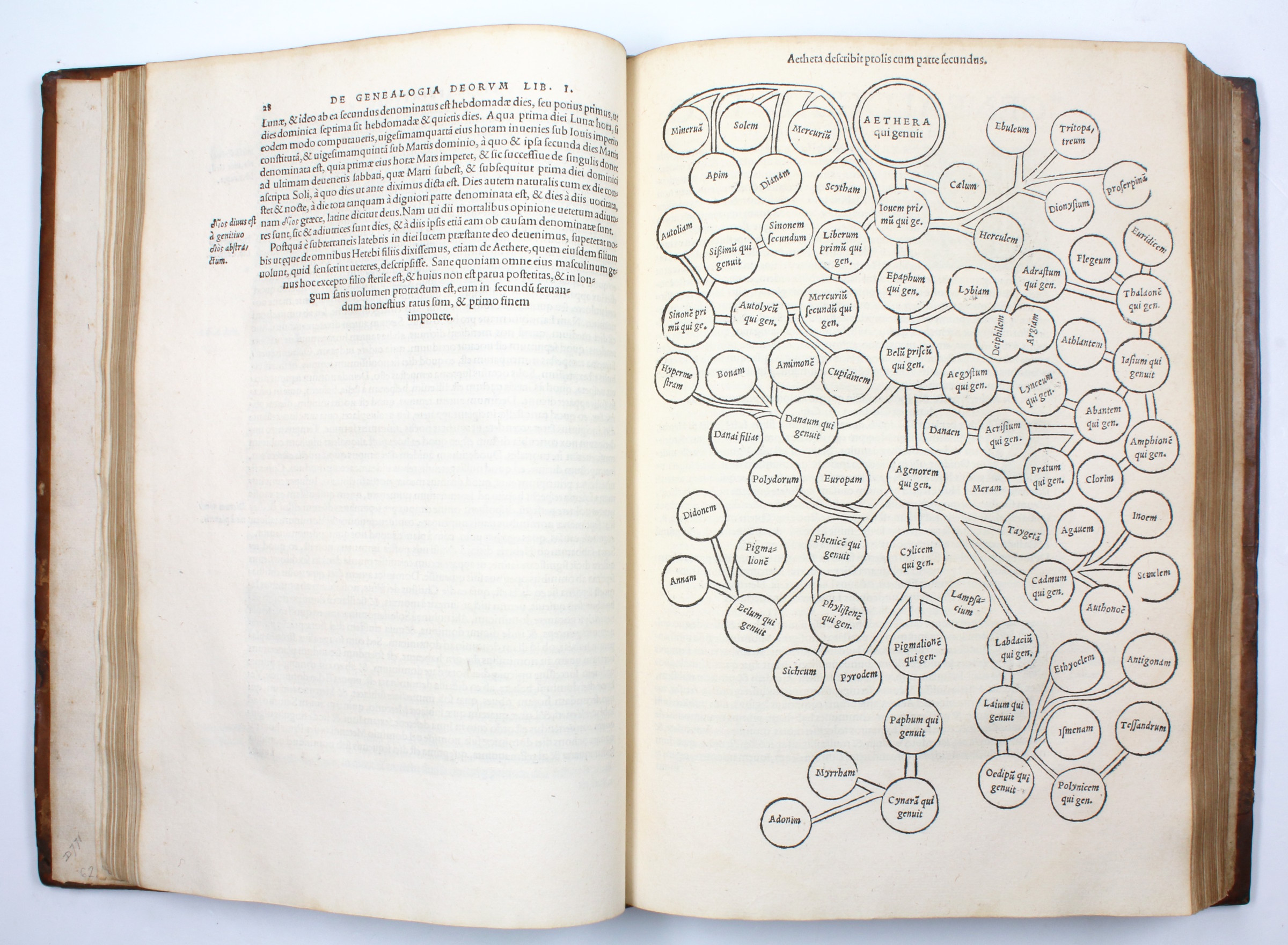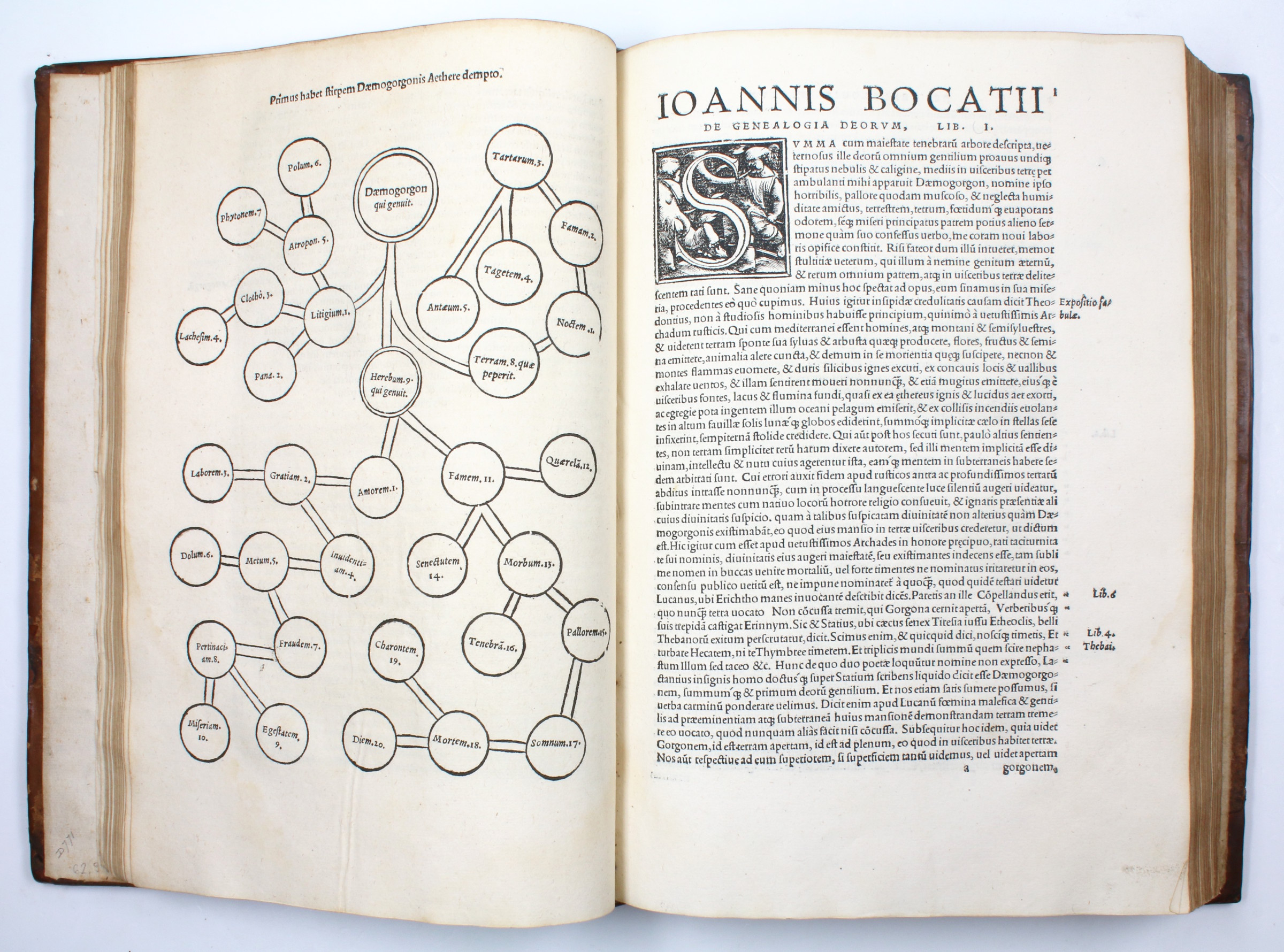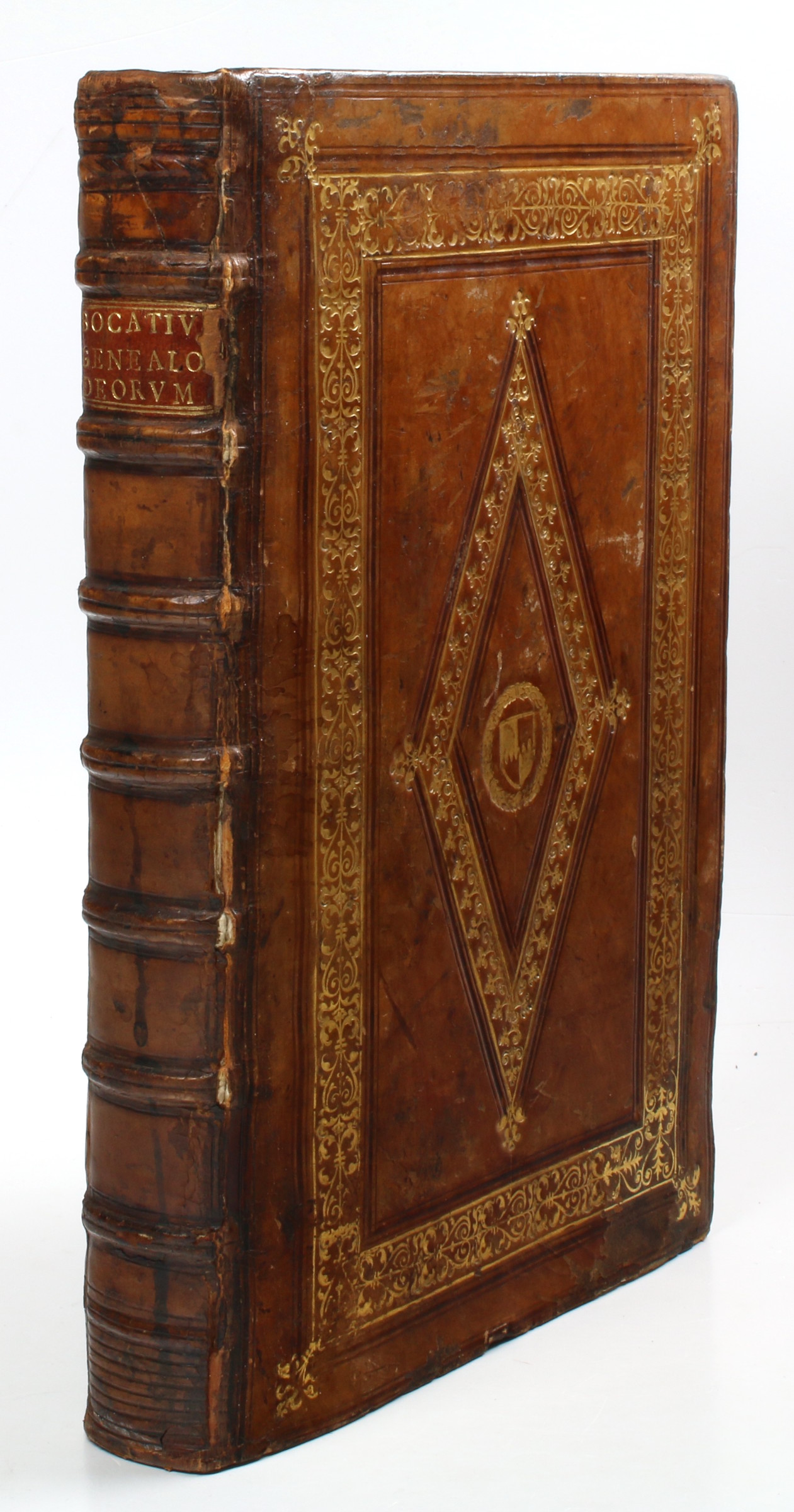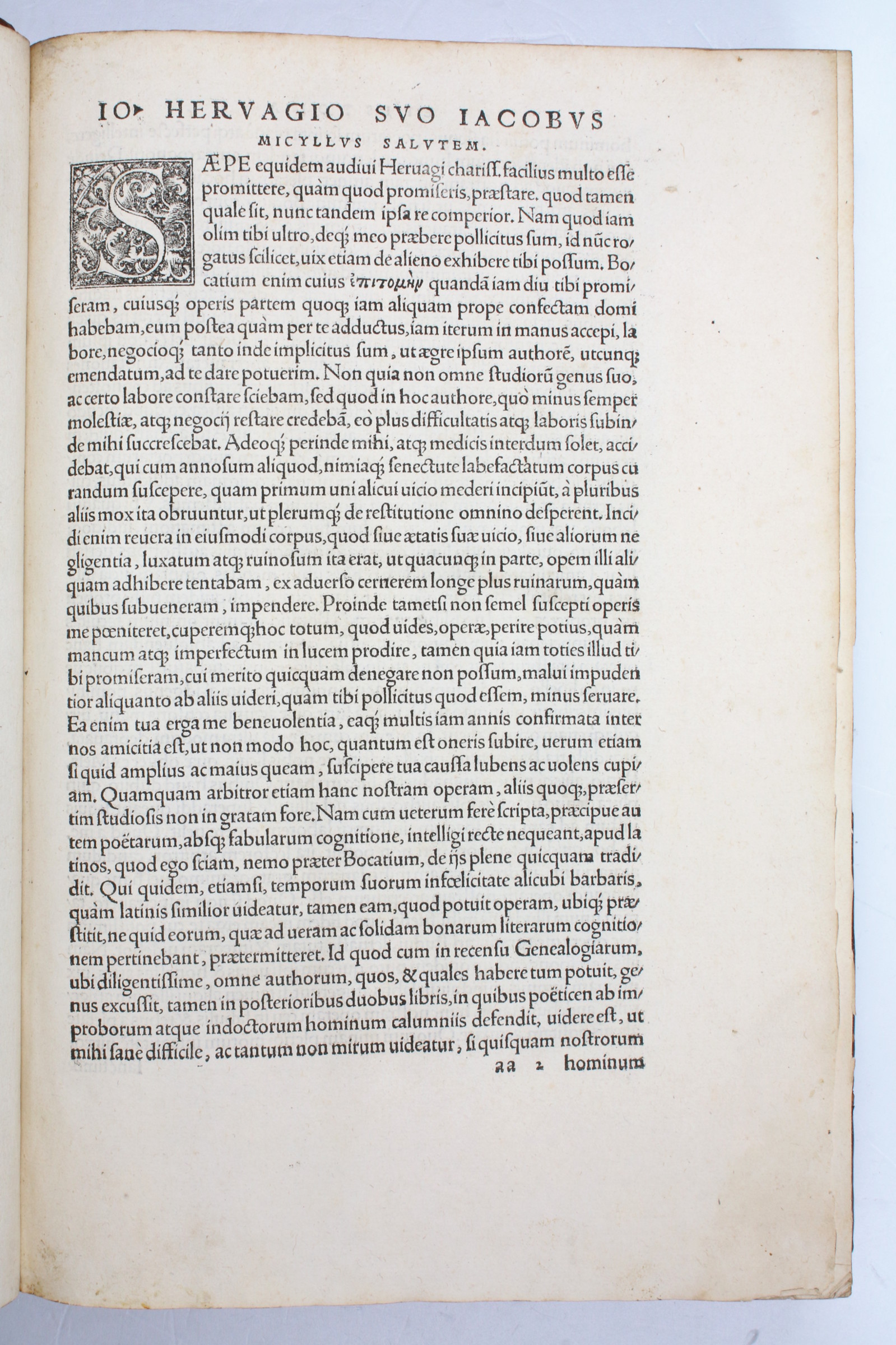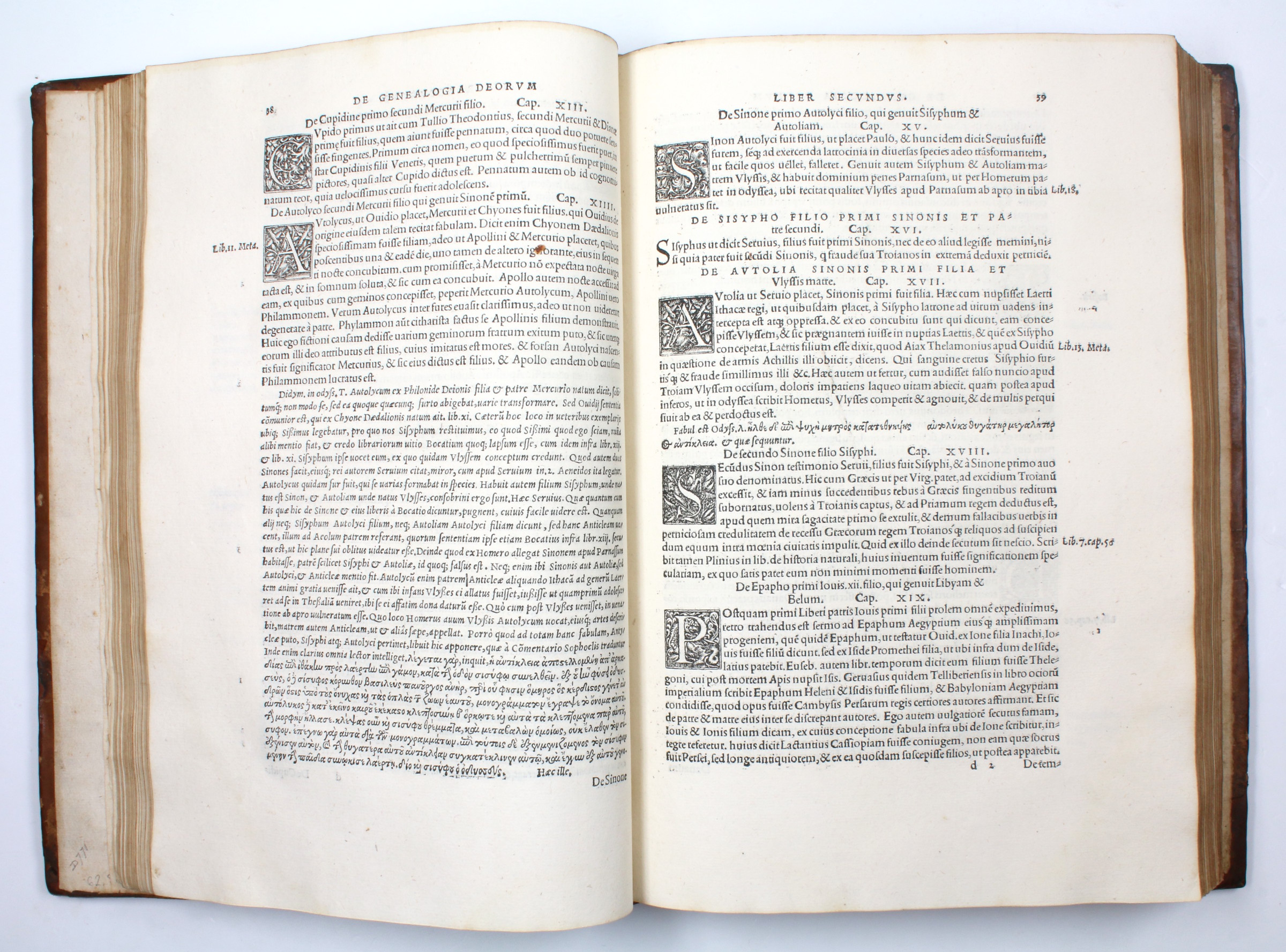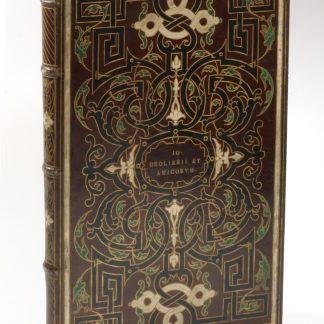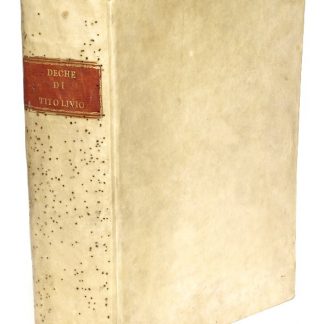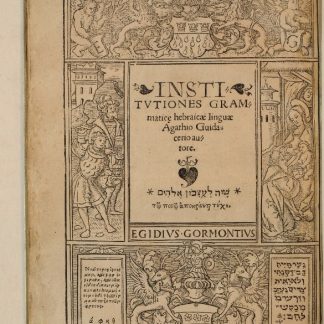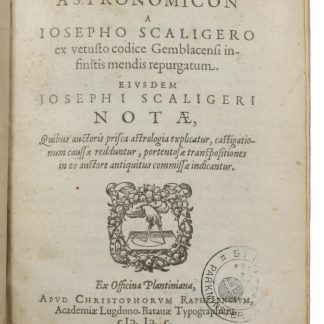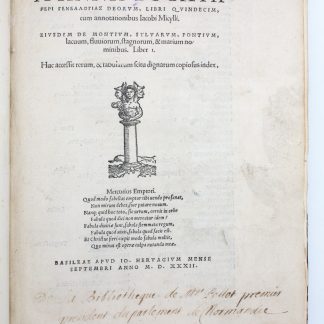Basel humanist work in an early French armorial binding
Peri genealogias deorum, libri quindecim.
Folio (220 x 310 mm). (68), 504, (4) pp., including errata leaf. With numerous woodcut initials and 13 woodcut family trees, woodcut devices on title page and final leaf. Contemporary full calf elaborately tooled in gilt with gilt armorial device.
€ 18.000,00
First printing of Jakob Moltzer's humanist edition of the "Genealogia deorum gentilium", Boccaccio's monumental encyclopedia of over seven hundred pagan gods whose tangled ancestries are carefully traced in woodcut family tree diagrams accompanying the text. These diagrams can be traced back to the earliest manuscript tradition of the Genealogia, and are famously one of the earliest usages of this style of family tree for a secular purpose. Based on the Paris edition of 1511, the Basel edition features new editorial material and indices, but eight of the thirteen woodcut genealogical trees are printed from the actual blocks used in Paris (III, IV, VI, and IX-XIII); the remaining five being slightly simplified copies.
Remarkably, this copy's binding displays the arms of a largely unidentified owner, known only to have the name P. de Beaulieu and to have had a similar binding commissioned in Paris. The armorial shield, enclosed within a circular wreath, is situated in the centre of the elaborately tooled front and rear covers, and is one of the earliest armorial stamps of the modern type. The first collector to order a series of such armorial bindings was Benoît Le Court of Lyon, who adopted the custom about 1540. The fashion carried to Paris, where it was taken up by Jean Brinon, Cardinal Charles de Lorraine, and several unidentified collectors. Anthony Hobson surveyed the introduction of the style, identifying 13 stamps in use by 1550, and recording their usage. One example of the present stamp was known to Hobson from the J. R. Abbey library, which led to the discovery of the name P. de Beaulieu - but which Beaulieu remains uncertain, and the owner ultimately remains unidentified. What is more certain is that the book made its way to Claude Pellot (1619-83), whose ownership inscription is on the title-page, and first president of the parliament of Normandy.
1) P. de Beaulieu (his armorial shield to both covers).
2) Claude Pellot (1619-83), French lawyer, first president of the Parliament of Normandy, conseiller et maître des requêtes and cousin of the statesman Jean-Baptiste Colbert (ownership inscribed to title-page).
3) Sydney Richardson Christie-Miller (1874-1931), English collector.
4) Sold at Sotheby’s, London, 31 July-3 Aug. 1917, lot 218, to J. & J. Leighton, London (£6 10s).
5) Sold at Sotheby’s, London, 14-19 Nov. 1918, lot 134, to Davis & Orioli, London (£2 2s).
6) Sold at Christie’s, London, 25 Nov. 1992, lot 130, to Maggs Bros., London (£1,000). Offered in their Catalogue 1157 [1993], item 10).
7) Thomas Kimball Brooker, oil industry executive (b. 1939).
Some exterior wear and chipping, a few leaves affected by a light dampstain or minor smudging. In very good condition.
VD 16, B 5846. BM-STC German 129. Adams B 2173. USTC 667713. OCLC 29085981.

